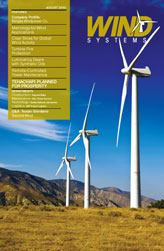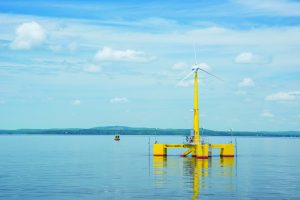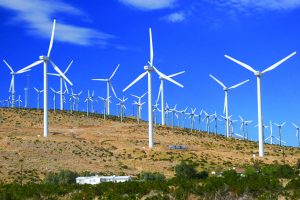When you fall ill or have a medical emergency, you know whom to call. It is the same with wind power maintenance issues. When your wind components are “under the weather”—perhaps literally—you need to be sure you have the right resources in place to provide emergency service solutions. The list of parts that can suddenly malfunction or break down because of defects, accidents, and stress problems can be lengthy. It doesn’t matter if it’s a wind blade or a small electrical part, all it takes is one nonfunctional component to shut down an entire turbine. If a blade breaks and has to be replaced, or a gearbox stops functioning, or ice crushes a part, you don’t want to wait forever for replacements.
Plan Ahead
Due to increasing demand for components, getting those replacements can take months, which means many turbines are motionless and useless. And that means lost revenue. A turbine can be struck by lightning, seriously affected by excessive wind, strain and stress, and even fire. Sea and weather conditions don’t play favorites—you don’t want an act of God to turn into an act of desperation by not having an emergency logistics plan in place for replacement components. That means rapid response from resources to get those parts to the site; fast, responsive transportation services to get your wind turbines working again.
You should be able to get spare parts just in time, whenever and wherever you need them, whether that be blades or rotors for a wind farm in Europe, motors or shafts for a location in Africa, gearboxes, or drives and brakes for the United Sates. Not to mention components for upgrading purposes. Unfortunately, purchasing can be a major issue. The price tag for replacements can be even higher without a reliable supply chain management plan in place—global delivery service through a logistics provider that can get you the parts you need at any time and by every mode of transportation necessary: ocean, air, rail, road, or inland waterways.
While standardized processes are the answer, there are few reliable options in place right now. Logistics management for emergency parts is still very much in the early stages of development. The majority of wind component producers are still new to the development and implementation of supply chain design. As OEMs enter the market they may know how to source equipment, but they often do not have an organization in place to handle the logistics. Plus the number of wind power OEMs is growing fast, which will put additional pressure on inventory and the ability to deliver. It could be a problem without the in-house expertise or access to resources that can source components.
Proactive Planning
Regional hubs for components are an option. They could deliver key shipments within a targeted time period. In area one, for example, within a specific radius delivery could be within 24 hours, and in area two it could be 48 hours. With agreed-upon dispatch points, proactive planning can be brought to bear on what is currently a reactive process. There should be a pre-calculated routing for each region so you know who to contact and where the shipment is coming from. At the moment calls go from the developer/OEM to someone who then contacts someone else, which then generates an order. The process slows down.
Outsourcing warehousing for components is another solution, especially if the wind farm is large or if the location and weather conditions present an increased need for replacement parts. A request could be issued directly to the warehouse; the logistics resource managing the process only needs the coordinates of the wind turbine that requires the part. Thanks to geopositioning systems, the logistics company doesn’t even need the location or even the country.
The Right Resources
Time and again it comes down to selecting the right resource. A reliable supply chain resource that doesn’t need to be managed, knows where the parts are, and who can get them to you fast.
































